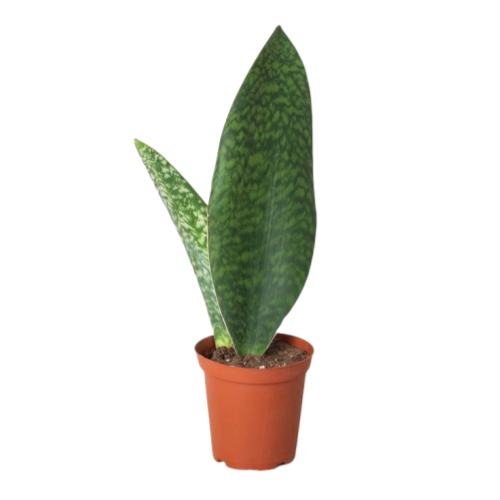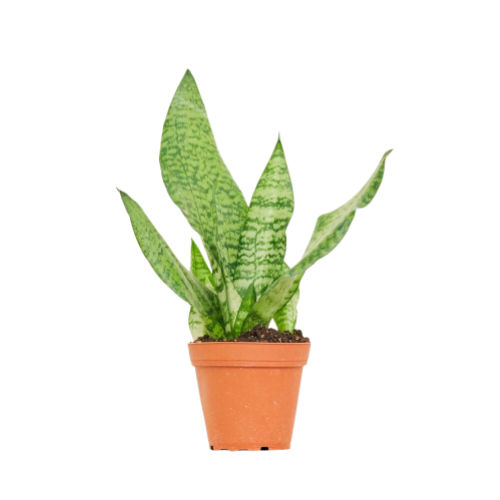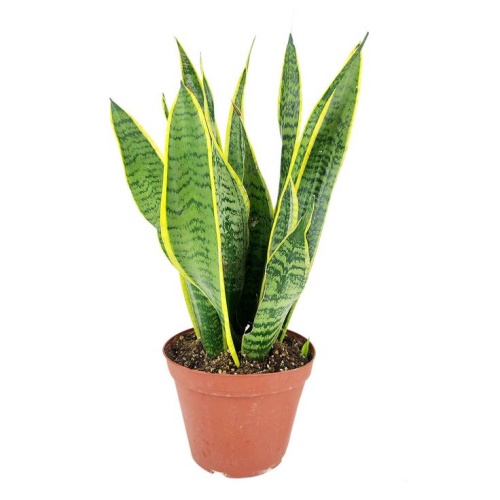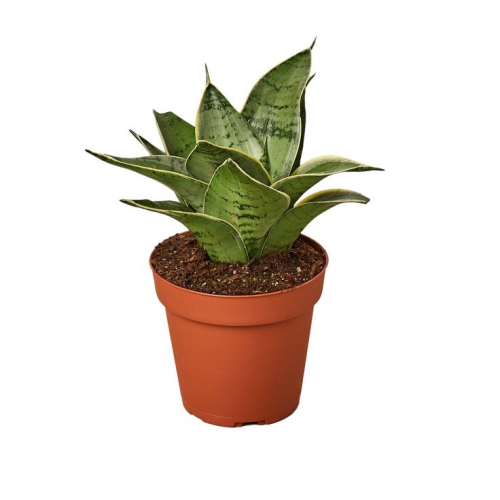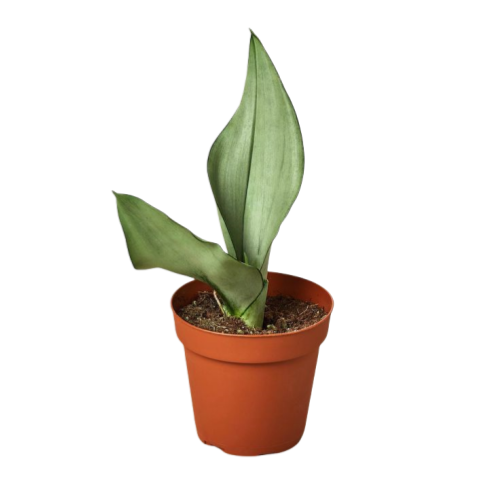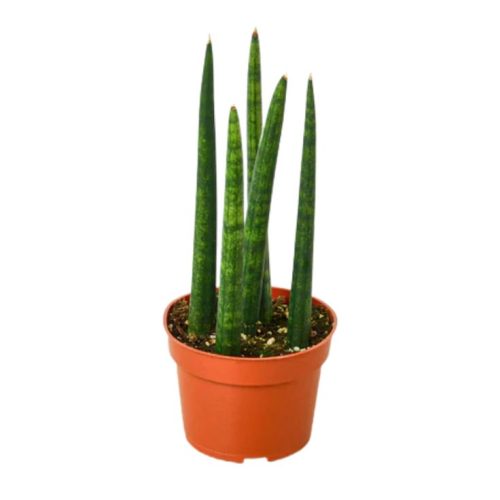Sanseviea La Rubia
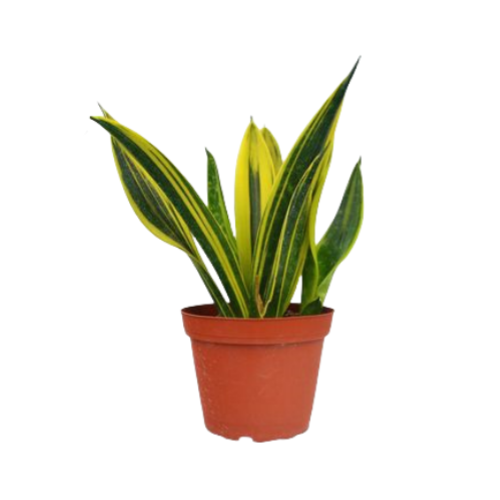
- Botanical Name: Sansevieria trifasciata ‘La Rubia’
- Family Name: Asparagaceae
- Batang: 2-5 Inch
- Suhu: 12 ℃~29℃
- Others: Bright indirect light, drought-tolerant.
Ihtisar
Panjelasan Produk
Tropical Stripes & Style: The Sansevieria La Rubia’s Low-Effort, High-Impact Greenery
The Striped Wonder: La Rubia’s Tropical Charm
Sansevieria La Rubia, scientifically known as Sansevieria trifasciata ‘La Rubia’, originates from the tropical regions of West Africa, ranging from eastern Nigeria to the Congo, and is also naturally found in Madagascar and India.
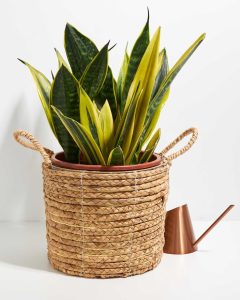
Sanseviea La Rubia
This plant is renowned for its striking yellow and dark green striped leaves. The sword-shaped leaves feature a unique combination of yellow and green, with each plant’s leaves exhibiting a distinctive color and stripe pattern, making each Sansevieria La Rubia truly one-of-a-kind. In terms of leaf morphology, they typically grow upright, forming a basal rosette, with long and narrow leaves. The edges are usually green, while the center of the leaves display silver-gray or yellow stripes, making Sanseviea La Rubia Nangtung diantarana seueur tutuwuhan alatan warna sareng bentuk anu unik.
The Low-Maintenance Diva: Sansevieria La Rubia’s Easygoing Green Lifestyle
-
Cahaya: Saneviawan la Rubia milih lampu caang, lampu henteu langsung sareng adya pikeun kaayaan lampu anu handap, henteu langkung dreat ngabantah ningkatkeun warna daun greatna. Slack Sundah langsung kedah dihindari kusabab teu disicel daun.
-
Cai: Tutuwuhan ieu ageung pisan, sareng nyiram kedah lumangsung saatos taneuh parantos garing. Dina lingkungan imah rata-rata, ieu panginten nyiram unggal 4 minggu, tapi frékuénna tiasa variasina dina usum, lingkungan, sareng kaayaan cahaya. Langkung sering ditanaan panginten dipikabutuh dina bulan anu langkung saé.
-
Taneuh: Éta peryogi taneuh anu tertinging anu sumebar, sapertos anu dianggo pikeun cachi atanapi succulent, dekic na kaayaan tumuwuh alami na Campuran keusik, perlambah, sareng zat organik ngabantosan masihan saluran anu dipikabutuh sareng gizi.
-
Suhu sareng asor: Sasarevieria L Lubia tumbuh ogé dina kisaran suhu 60 ° F dugi 85 ° F (kira-° C nepi ka 29 ° C) sareng tiasa toléran asor anu langkung rendah. Éta pilihan anu idéal pikeun cai garing demi garing sakumaha henteu ngabutuhkeun kalembaban luhur pikeun ngarawat.
-
Getombus: Apply a balanced liquid fertilizer every 4-6 weeks during the growing season (spring and summer). Reduce fertilization in the fall and winter when the plant’s growth slows down.
-
Pruning sareng pangropéa: Sansevieria La Rubia requires minimal pruning. Remove any yellowing or damaged leaves to maintain the plant’s appearance and health. Repot every 2-3 years to refresh the soil and accommodate its growth.
Wali héjo: Pangropéa ageung, Sumsheviassid gaya Tinggi
Sansevieria L C Rubia sareng variétas pepelakan anu sami, sapertos Sanseviitia Trifasica sareng Elin Hahnii, asalna tina daérah kawinan Afrika. Bagian di Asia. Bagian kidul. Tutuwuhan ieu tercinta pikeun adaptability maranéhna sareng syarat pangropéa rendah. Aranjeunna tiasa adaptasi sareng kaayaan cahaya sareng lingkungan, ti kembang panonpoé tacan terang ku rohangan cahya, sareng ngagaduhan cai anu minimal, jauh sapertos rélos cai, jauh pisan daun.
These Sansevieria species are known for their unique aesthetic appeal. Their long, upright leaves range in color from green to nearly black, often adorned with distinctive patterns, such as the yellow edges of Short Leaf Sansevieria (Sansevieria trifasciata ‘Hahnii’) and the silver leaves of Silver Short Leaf Sansevieria (Sansevieria trifasciata ‘Laurentii’). The decorative appearance of these plants makes them a popular choice for indoor decoration.
Beyond their beauty, Sansevieria La Rubia and similar varieties are also favored for their air-purifying capabilities and oxygen release at night. NASA’s clean air studies have shown that these plants can filter toxins such as formaldehyde, benzene, and trichloroethylene, helping to improve indoor air quality. They release oxygen through photosynthesis at night, making them suitable for placement in bedrooms to support better sleep. These health benefits, coupled with their easy-care characteristics, make these plants an ideal choice for homes and offices.





